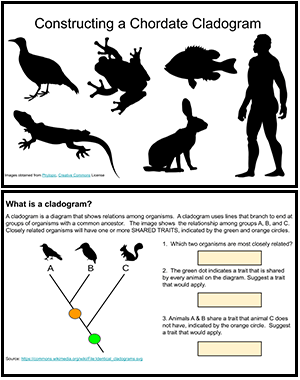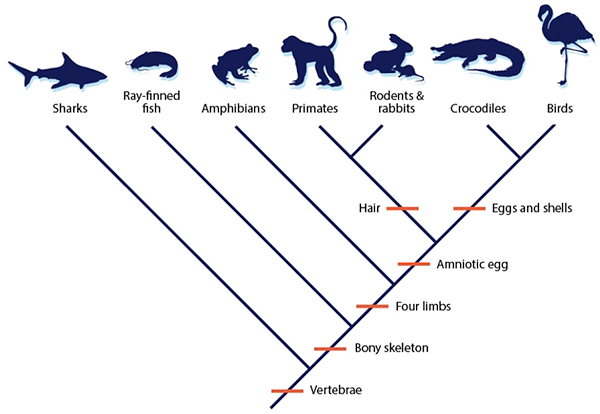
Students learn how to construct a cladogram with this guided learning activity. I use this as an activity to introduce the unit on chordates and also as a review of evolution. I have similar cladogram activities that can be done on paper, but this one is designed to work on Chromebooks. Students drag and drop labels and answer questions as they proceed through the slides. You can assign this as a self-paced activity or work on it with students in class.
I intended for each slide activity to build on the previous slide so that students could work at their own pace. My goal was to break the process into simple steps with visually appealing icons.
I obtained the icons from a great resource: Phylopic.org, that provides silhouettes of organisms that a licensed Creative Commons. I chose animal groups that students should be familiar with.
Students may still find this activity challenging. If you are working with them in class, you may need to pause and help them with the overall cladogram showing the derived traits.
What is a Derived Trait?
- A derived trait is a form of a trait that evolved from an ancestral form
- Is present in an organism, but was absent in the last common ancestor
- Arise during the evolution of a group and differ from the traits of the ancestor of the group
- Appear through either loss or gain of a feature

Students can also practice their cladogram skills with this worksheet on Gila monsters.

